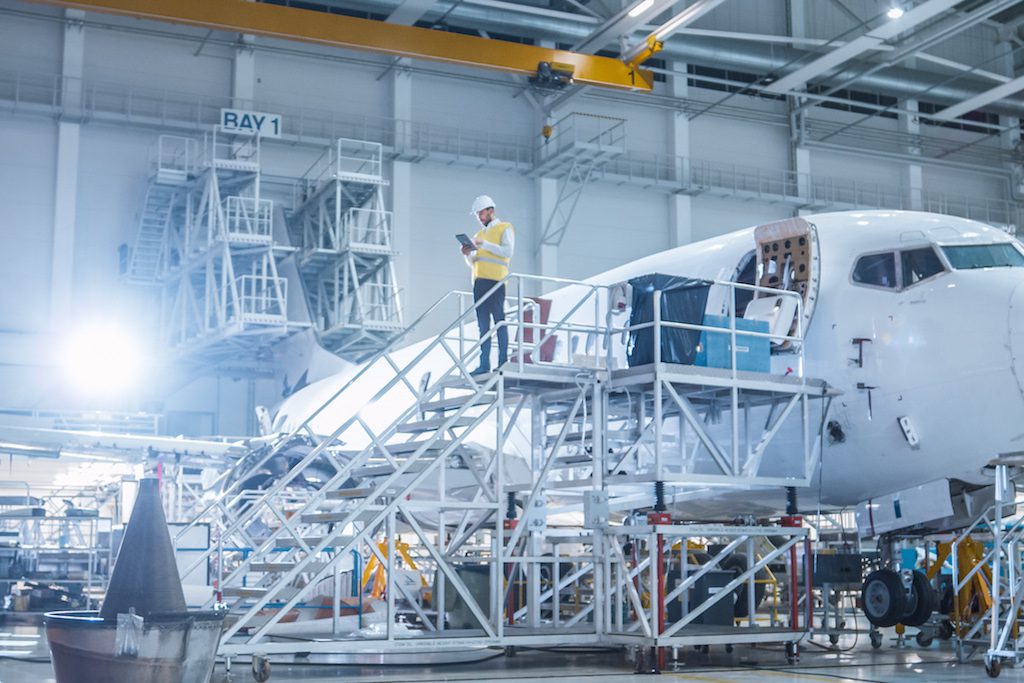Four Ways Tech Can Optimize Airline Operations and Improve Customer Satisfaction

Skift Take
This sponsored content was created in collaboration with a Skift partner.
To prepare a flight for departure and safely get it in the air requires a diverse group of teams - the cabin crew, the flight crew, maintenance teams, and ground operations teams - to work together. These employees are working under time pressure and directly or indirectly influence the customer experience. Therefore, this entire ecosystem of employees must be on the same page to perform at optimal speed. Airlines are increasingly recognizing the importance of equipping these teams with the right data and tools so that they can optimize operations and improve customer experience.
“Initially, airlines innovated a lot to improve the direct-to-customer experience. From enabling them to self-serve to giving them updates, customers actually had more real-time information than employees,” said Greg Land, global industry leader for aviation, hospitality, and travel related services at IBM. “But airlines are beginning to change their focus now.”
Employees are constantly generating massive amounts of data with every task they complete and every interaction they have with coworkers and customers. Airlines, airports, and supporting vendors are looking for ways to make sense of this data, and apply it to equip and connect their ecosystem of employees. IBM has been using machine learning, artificial intelligence, cloud technology, blockchain, mobility, and more to drive benefits for businesses and consumers alike.
Empowering the Cabin Crew
The cabin crew, in the past, has been responsible for taking care of safety and serving the customers in the flight only. However, new technologies have not only changed how they do their job but also what they do. Now, when there is a flight delay, the flight attendant knows before landing if a particular passenger will be missing his or her connection and can re-book him or her on a suitable alternative while still in the flight. This has resulted in the evolution of the flight crew’s role significantly.
“It's really about sitting down with that user and completely rethinking their role based on all the new information they have in front of them,” Land said. “We partnered with Apple five years ago and layered our design thinking expertise on their knowledge of how people, be it consumers or employees, use their phones to create intuitive mobile applications that improve efficiency. I think the greatest innovation in empowering employees today comes from data, mobile, and cloud coming together,” he added. As IBM has evolved its solutions, it has layered artificial intelligence and machine learning on top of customer data, so that employees can predict customers’ needs.
Such mobile applications (app) from IBM have helped the cabin crew of United Airlines to perform retail transactions and resolve customer care issues on the spot. “It’s had a really positive impact on our employees in terms of their understanding of our commitment to them. It’s allowed them to feel confident in engaging our customers in a lot of different situations, and ultimately our customers get their service more quickly and more effectively,” said Jason Birnbaum Senior Vice President of Digital Technology
Simplifying Flight Crew Preparation
Pilots, in preparation for a flight, study weather patterns, weight of cargo, migratory bird patterns, and so much more. This immense amount of information was provided to pilots as printed manuals once they arrived at the airport, which they typically read at their airline’s flight control center and then carried along on the flight. Singapore Airlines developed Fly Now and Roster mobile applications for their pilots to help ease the burden of preparation.
“It’s really about having information at your fingertips,” said Lorimer Yong, a management pilot with special duties for training at Singapore Airlines, who helped IBM create these apps. The Fly Now app allows pilots to prepare for a flight from anywhere in the world. The Roster app helps them manage their schedules and communicate with each other without having to log into a clunky web portal.
While creating solutions for pilots, IBM strives to understand how having a digitized flight manual or real-time weather updates would impact their flight plan or fuel refill decisions. “I think it's just the fact that we feel strongly about not just using design thinking, but using design thinking with the actual user at the center that makes a difference,” Land said.
Connecting The Dots for Maintenance Teams
“Maintenance issues represent a substantial cost to an airline — to the tune of 28 percent of the total operating cost,” said Rob Ranieri, vice president and partner, global industry offering leader, travel and transportation at IBM. But with the help of IBM Watson, Korean Airlines shortened its maintenance defect history analysis times by 90 percent.
“When something goes wrong with an aircraft part, the maintenance person has to look through copious amounts of notes to find the information they need,” Land said. IBM Watson, however, was able to ingest the structured and unstructured data from multiple sources such as technical guidelines, non-routine logs, technician notes, trouble-shooting time, material cost data, and in-flight incident history. By applying artificial intelligence to this data, Watson provided insights that helped the staff diagnose the problem quicker and fix it more thoroughly to prevent future issues.
Maintenance-related tasks are often unplanned, and it puts an immense amount of pressure on the engineers and their supervisors to fix the problem quickly. IBM can now deploy an enterprise app that would help the cabin crew to report maintenance problems such as a broken seat from the air. “This way, the maintenance team is prepared with replacement parts before the flight even lands instead of having to wait for the flight to land, and then diagnose the problem and look for replacement parts,” Land said.
Amsterdam’s Schiphol Airport implemented similar solutions to not only predict where maintenance checks might be required but also to allow employees to pick up work requests on the move. These solutions deployed with IBM helped airlines drive operational efficiencies and significantly reduced the time needed to fix these problems, therefore reducing delays that result in unhappy customers.
“Blockchain has been slow to make its mark in the industry but can have a huge impact on operations,” Land said. “Blockchain is the perfect solution for when you need a single record of truth across systems with a high level of security. Imagine the implications of having a similar set up for aircraft parts for the maintenance teams, where it knows exactly which part is coming from which manufacturer, how long it will take to get a replacement, and when it would need to be rotated out.” The maintenance team will have a better way of predicting and managing routine maintenance tasks and will be able to deploy better safety protocols as well. IBM has a similar solution for the agricultural industry, Food Trust, that uses blockchain to track the source of food contamination and so on.
Streamling Ground Operations
Preparing any aircraft for take off requires an ecosystem of airline and airport employees to be in sync. KLM worked with IBM Services to create an app that streamlined ground operations. “The system really offers a thorough, real-time overview of everything we need to know about the departing aircraft,” said Patrick van Exel, shift leader, KLM. As a result, KLM achieved faster and more efficient turnaround times.
Before an aircraft can take off, numerous system and maintenance checks have to be completed. “Earlier, a supervisor would have to check numerous systems or hear from the person responsible for the check to report completion, and then give the go ahead,” Land said. Now, the IBM app collects all the data in one place on a single iPad. The team coordinator can see, at a glance, whether the aircraft is ready for takeoff or whether something or a passenger is still missing. The app also has other features. If a passenger doesn’t make it to the flight, the team coordinator knows which container has that passenger’s bag and that container will not be loaded. “And with us developing and testing mesh networks, where teams can communicate and update information in real-time using Bluetooth technology. Coordination will become even easier,” Land said.
As airlines continue to look for ways to optimize their operations and improve customer satisfaction, Land predicts that more diverse technologies will be deployed to create more innovative solutions. “The critical thing here is that it's not just technology. It's not just data. It's data, technology, and people — all three — coming together, and that's what's got to work here,” Land said. “You're not sitting down and redesigning the way an employee does their job, you are redesigning their job.”
This content was created collaboratively by IBM and Skift’s branded content studio, SkiftX.




